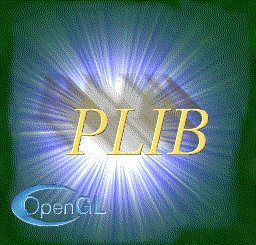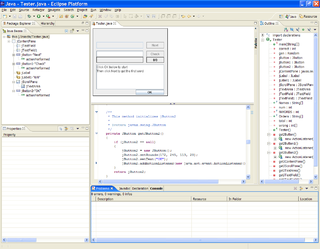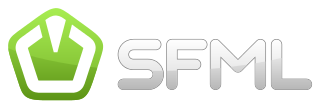The topic of this article may not meet Wikipedia's notability guidelines for products and services .(February 2016) (Learn how and when to remove this template message) |
 Official logo | |
| Developer(s) | Steve Baker |
|---|---|
| Stable release | 1.8.5 / November 2006 |
| Repository | |
| Written in | C++ |
| Type | software libraries |
| License | LGPL |
| Website | plib |
PLIB is a suite of free and open-source libraries to ease the development of computer games. It was originally written by Steve Baker in 1997 and licensed under the LGPL.

In computer science, a library is a collection of non-volatile resources used by computer programs, often for software development. These may include configuration data, documentation, help data, message templates, pre-written code and subroutines, classes, values or type specifications. In IBM's OS/360 and its successors they are referred to as partitioned data sets.
Contents
PLIB includes sound effects, music, a complete 3D engine, font rendering, a simple windowing library, a game scripting language, a graphical user interface (GUI), networking, 3D math library and a collection of utility functions. All are 100% portable across nearly all modern computing platforms. Each library component is fairly independent of the others to encourage replacement with other libraries like Simple DirectMedia Layer (SDL) or FLTK.

The graphical user interface is a form of user interface that allows users to interact with electronic devices through graphical icons and visual indicators such as secondary notation, instead of text-based user interfaces, typed command labels or text navigation. GUIs were introduced in reaction to the perceived steep learning curve of command-line interfaces (CLIs), which require commands to be typed on a computer keyboard.

Simple DirectMedia Layer (SDL) is a cross-platform software development library designed to provide a hardware abstraction layer for computer multimedia hardware components. Software developers can use it to write high-performance computer games and other multimedia applications that can run on many operating systems such as Android, iOS, Linux, macOS, and Windows.

Fast Light Toolkit is a cross-platform widget library for graphical user interfaces (GUIs), developed by Bill Spitzak and others. Made to accommodate 3D graphics programming, it has an interface to OpenGL, but it is also suitable for general GUI programming.
PLIB has been used by many projects (not all games, and not all open-source), but has not kept pace with technical developments that happened after its original conception (e.g., shader technology), so it is currently outdated and rarely used for new projects. While nowadays there are better portable and open-source replacements for all of its components are available, a similar comprehensive suite of libraries is still missing.

In computer graphics, a shader is a type of computer program that was originally used for shading but which now performs a variety of specialized functions in various fields of computer graphics special effects or does video post-processing unrelated to shading, or even functions unrelated to graphics at all.






